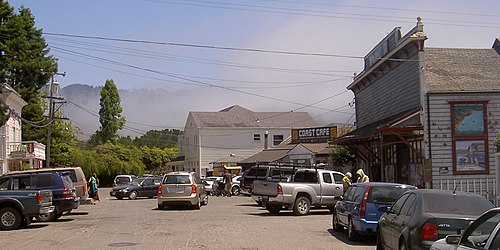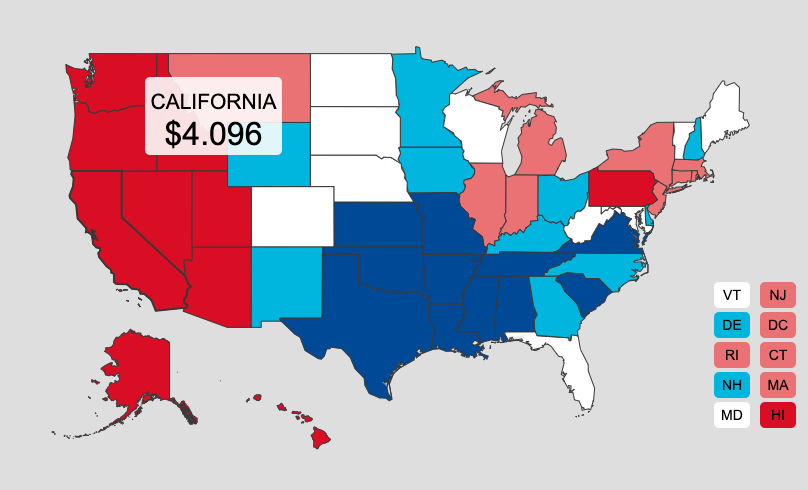
Bolinas, California. (Photo: Public Domain)
A Critical Lifeline for Rural California Just Got More Expensive
The Postal Service has increased package rates to rural destinations for more than 17,000 zip codes across the country
By Horace Cooper, February 24, 2025 6:42 am
Americans and the small businesses they support have long relied on the United States Postal Service for affordable mail and package delivery. However, recent price hikes now threaten to make package delivery less affordable, impacting businesses and their customers nationwide.
In rural communities like those in California, where delivery options are limited, the impact can be devastating. In 2023 and with little fanfare and less notice, for example, the USPS abruptly cut off one small coastal community – Bolinas.
Many people in this aging rural community that backs up to the Point Reyes National Seashore rely on the post office for parcels, pension checks and mail-order prescriptions. The Post Office was a local institution, having occupied half of a single-story wooden building on Brighton Avenue for six decades. But even though Bolinas has had a post office since 1863, they were given less than two weeks’ notice that it was closing.

Residents immediately responded, engaging in rallies and a campaign to get the USPS to restore their service. They even drafted their own plan for a temporary post office, offered to fund it, and sent it to Congress. Up to this point, these efforts have been to no avail, but it appears that is deal is now close that could bring the Bolinas post office back to town.
After nearly two years of frustration and adverse impacts for this community, it is easy to see just how valuable package and mail delivery can be. However, there are now signs that rural residents may find their service further diminished.
To begin with, the Postal Service has increased package rates to rural destinations for more than 17,000 zip codes across the country. The rate increases came through changes to the Merchant Rate Card, the commercial pricing offered to business shippers. They essentially amount to a rural delivery surcharge, even though the Postal Service likes to say that unlike its competitors UPS and FedEx, it doesn’t impose rural surcharges.
For small businesses at the heart of our communities, which have limited delivery options in rural areas already, these rate increases will only make it more expensive for them to ship their orders. In order to survive, these local artisans, boutique retailers, and community bookstores, among others, will likely have to pass these costs on to their customers by increasing prices or charging higher shipping costs. This hurts communities by further pushing up costs in an already inflationary economic environment and adds another pressure on small and medium-sized businesses struggling to compete with mega-retailers.
However, this is not the only cost increase these businesses are about to be confronted with. The Postal Service is also making its package delivery services more expensive by eliminating discounts and raising prices for businesses that elect to hand over their packages to the Postal Service for “last mile delivery.”
In the past, many businesses reduced their costs by preparing their packages for shipment themselves and dropping them off at postal facilities closer to their final destination for that “last mile” delivery. By doing this, businesses could get a discount by privately arranging for most of the transportation and doing the bulk of the work faster and for a lower cost than the Postal Service could. These cost savings were then often passed down to customers.
Now, however, the Postal Service has eliminated these discounts for package consolidator companies who aggregate mail and packages from multiple shippers. The goal is to force businesses to enter their packages earlier into the Postal Service network and forego a more efficient package handling process in order for the USPS to collect this revenue for themselves.
For individual businesses that still elect to give their packages to the Postal Service close to their destinations, the Postal Service has raised prices considerably; by an average of 70% for lightweight Parcel Select packages under one-pound. Overall, Parcel Select, which is marketed as the Postal Service’s economical ground delivery service for businesses, has similarly experienced rate increases averaging 42.4% for Destination Entry. If businesses pass on even 20% of this average increase to customers, it will mean a more than 8% increase in price.
The Postal Service has a statutory obligation to provide “a maximum degree of effective and regular postal services to rural areas, communities, and small towns where post offices are not self-sustaining.” Despite this charge, the Postal Service’s plans to raise prices, in some instances in rural areas specifically, in a way that seems to be nothing else than opportunistic and punitive.
Americans and Californians have endured price-hikes and inflation for a few years too many now. There’s no need for the Postal Service to add to the pain.
- A Critical Lifeline for Rural California Just Got More Expensive - February 24, 2025





Same town that decided it could infringe on 1A, block streets, and demand a vax card at outbreak of covid. It was also funny watching them try to take down signs so we would not surf there. DNC central…loves to advocate for all kinds of progressive ideals…but for YOUR backyard, not theirs of course.
The US Post Office reported a $9.5 Billion dollar loss for FY 2024. No amount of rate increases cure that but overhauling the Post Office, including layoffs and new management may. If rural communities want to keep this service, they need to show support for DOGE and the Trump agenda. Not for Newsom to “Trump Proof” California. Alas.
USPS has to pay for their big union pay increases of 12% to 20% over the next three years, plus retroactive pay increases. So they stick it to rural residents. Nice.
Speaking of rural residents, where is the rural high speed internet you said you would put in Newsom ? Oh, that right, Newsom cut $2 billion from the rural internet budget last May. But we have plenty of money for illegal immigrants, to the tune of $30 billion a year.
Another Newsom failure.
In my area the rural PO does not deliver most packages. You have to drive 20 miles or more to pick them up at the PO since they are apparently so overworked that the delivery you pay for can’t be provided.